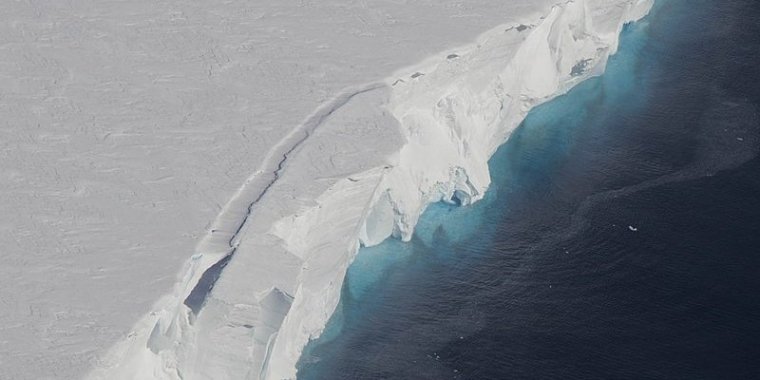| News / Science News |
Scientists describe how 'upside-down rivers' of warm water break Antarctica's ice shelf
Researchers from the University of Colorado at Boulder (CU Boulder) in Colorado and the College of Wooster in Ohio reported a new mechanism by which warm ocean currents erode the ice shelves along the coast of Antarctica, contributing to the planet's rising oceans.

The edge of an ice shelf in Antarctica. Image: NASA/Jane Beitler
"Warm water circulation is attacking the undersides of these ice shelves at their most vulnerable points," said study co-author Karen Alley. The Wooster professor added, "These effects matter [...] But exactly how much, we don't yet know. We need to."
The researchers used satellite imagery to identify places where coastal ice sheets had melted, creating areas of open water called polynyas, which, they observed, occurred in the same places every year. From this, they concluded that warm water was reaching the ice sheets in the same places every year as well.
Because warmer water is more buoyant, says the study, it rises above cooler water, creating what the scientists describe as an "upside-down river" flowing underneath the layers of ice. Ice shelves tend to weaken as they move, forming cracks and crevasses at their edges and stretch points.
Warm water, being on top, tends to become even more likely to find these cracks, so increasing the ice mass' melt rate.
Ice shelves are not actually part of the land mass with which they are associated. Rather, they float along the coast nearby. Because they can be prevented from drifting further away by high places in the ocean floor, they can in turn prevent land-associated ice masses from becoming detached.
"Now we're seeing a new process, where warm water cuts into the shelf from below," said study co-author Ted Scambos of CU Boulder's Cooperative Institute for Research in Environmental Sciences (CIRES). "Like scoring a plate of glass, the trough renders the shelf weak, and in a few decades, it's gone, freeing the ice sheet to ride out faster into the ocean." (Wikinews)
YOU MAY ALSO LIKE





